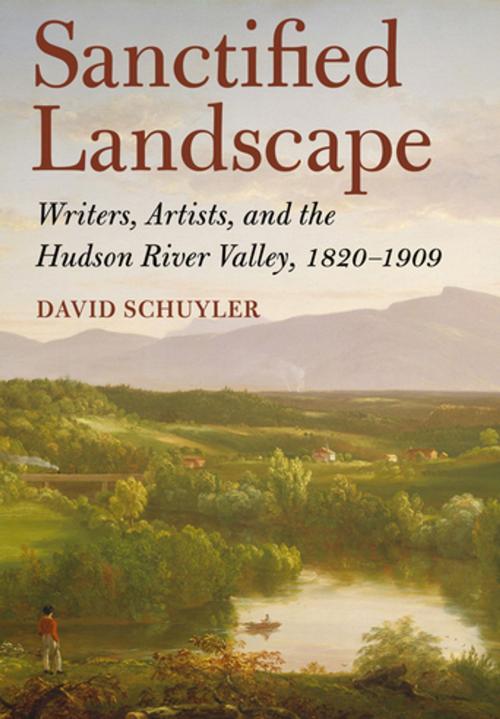Sanctified Landscape
Writers, Artists, and the Hudson River Valley, 1820–1909
Nonfiction, History, Americas, United States| Author: | David Schuyler | ISBN: | 9780801464706 |
| Publisher: | Cornell University Press | Publication: | April 6, 2012 |
| Imprint: | Cornell University Press | Language: | English |
| Author: | David Schuyler |
| ISBN: | 9780801464706 |
| Publisher: | Cornell University Press |
| Publication: | April 6, 2012 |
| Imprint: | Cornell University Press |
| Language: | English |
The Hudson River Valley was the first iconic American landscape. Beginning as early as the 1820s, artists and writers found new ways of thinking about the human relationship with the natural world along the Hudson. Here, amid the most dramatic river and mountain scenery in the eastern United States, Washington Irving and James Fenimore Cooper created a distinctly American literature, grounded in folklore and history, that contributed to the emergence of a sense of place in the valley. Painters, led by Thomas Cole, founded the Hudson River School, widely recognized as the first truly national style of art. As the century advanced and as landscape and history became increasingly intertwined in the national consciousness, an aesthetic identity took shape in the region through literature, art, memory, and folklore—even gardens and domestic architecture. In Sanctified Landscape, David Schuyler recounts this story of America’s idealization of the Hudson Valley during the nineteenth and early twentieth centuries.
Schuyler’s story unfolds during a time of great change in American history. At the very moment when artists and writers were exploring the aesthetic potential of the Hudson Valley, the transportation revolution and the rise of industrial capitalism were transforming the region. The first generation of American tourists traveled from New York City to Cozzens Hotel and the Catskill Mountain House in search of the picturesque. Those who could afford to live some distance from jobs in the city built suburban homes or country estates. Given these momentous changes, it is not surprising that historic preservation emerged in the Hudson Valley: the first building in the United States preserved for its historic significance is Washington’s Headquarters in Newburgh. Schuyler also finds the seeds of the modern environmental movement in the transformation of the Hudson Valley landscape.
Richly illustrated and compellingly written, Sanctified Landscape makes for rewarding reading. Schuyler expertly ties local history to national developments, revealing why the Hudson River Valley was so important to nineteenth-century Americans—and why it is still beloved today.
The Hudson River Valley was the first iconic American landscape. Beginning as early as the 1820s, artists and writers found new ways of thinking about the human relationship with the natural world along the Hudson. Here, amid the most dramatic river and mountain scenery in the eastern United States, Washington Irving and James Fenimore Cooper created a distinctly American literature, grounded in folklore and history, that contributed to the emergence of a sense of place in the valley. Painters, led by Thomas Cole, founded the Hudson River School, widely recognized as the first truly national style of art. As the century advanced and as landscape and history became increasingly intertwined in the national consciousness, an aesthetic identity took shape in the region through literature, art, memory, and folklore—even gardens and domestic architecture. In Sanctified Landscape, David Schuyler recounts this story of America’s idealization of the Hudson Valley during the nineteenth and early twentieth centuries.
Schuyler’s story unfolds during a time of great change in American history. At the very moment when artists and writers were exploring the aesthetic potential of the Hudson Valley, the transportation revolution and the rise of industrial capitalism were transforming the region. The first generation of American tourists traveled from New York City to Cozzens Hotel and the Catskill Mountain House in search of the picturesque. Those who could afford to live some distance from jobs in the city built suburban homes or country estates. Given these momentous changes, it is not surprising that historic preservation emerged in the Hudson Valley: the first building in the United States preserved for its historic significance is Washington’s Headquarters in Newburgh. Schuyler also finds the seeds of the modern environmental movement in the transformation of the Hudson Valley landscape.
Richly illustrated and compellingly written, Sanctified Landscape makes for rewarding reading. Schuyler expertly ties local history to national developments, revealing why the Hudson River Valley was so important to nineteenth-century Americans—and why it is still beloved today.















